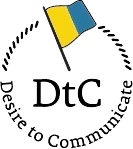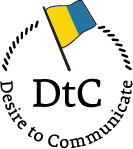AGILE WORKING
Betteke van Ruler, published in FuturePRoof (2015)
Traditional planning models may feel like they offer control, but it’s no more than an illusion; most communications issues are too complex for them to be applied successfully. Just as often practitioners can be guilty of seeing the changing dynamics of a given situation as an obstacle rather than an opportunity. In these situations, the speed of change is used as an excuse for not achieving objectives. Reflecting and adjusting planning processes is just one area in which communication professionals need to become much more agile in order to improve practice.
Agility is a philosophy in which the talents of employees are taken as a reliable benchmark and change is accepted as a fact of life. Agility promotes flexibility and resilience when dealing with change and requires trust between team members who are entirely focused on the timely delivery of products or services that really make a difference. Unnecessary documentation is omitted and there is plenty of room for the development of fresh insights and realistic alternatives, as agile experts say.
Supporters of the agile way of working scornfully refer to the traditional planning process as the ”waterfall” or the “cascade”, because what needs to be done is devised in detail behind the desk. All actions are almost automatically supposed to be executed like a waterfall, without reality checks of various functionalities.
Results focused
Agile means adjusting, but only to achieve the best results. Characteristic for agile working is that team members, the project owner and possibly other stakeholders work together for optimum results. There is a flatter hierarchy and bureaucracy is restricted to a minimum. Only what really helps to achieve your ambitions and what’s really functional is pursued.
Changes are not seen as obstacles but, on the contrary, are welcomed and formalized. Small multi-disciplinary teams work together in short iterations, with phased execution. Members collaborate with each other instead of working one after the other and the whole team takes responsibility for the result.
Traditional planning
In the various editions of his well-known book Strategic Planning for Public Relations, R.D. Smith suggests that the planning process in public relations consists of four phases with nine steps.
The first phase is an analysis of the situation, the organisation and the publics. The second is to draw up a strategic plan, which means establishing goals and objectives, formulating action and response strategies and developing the message strategy.
The third phase is tactics, which means first selecting communications tactics, and then implementing the strategic plan.
The fourth phase is an evaluation of the plan. This method is also known as RACE: Research, Action plan, Communications, Evaluation.
All too linear
In this kind of traditional communications planning you determine beforehand what results you want to achieve and what actions you must perform to arrive there. You set your targets and tactics in advance.
When conditions change along the way, or when the effects of your actions prove to be different to what you expected, you are forced to admit that your goals were not realistic, that you had aimed at the wrong target and/or that you had not chosen the right strategy, the right actions, or the right message.
In short: a waste of money and effort.
The traditional planning method is based on the classical theory of scientific management and a rather old-fashioned idea of how to build strategy.
In our dynamic and digitized world, these approaches to management and strategy are seen as ‘far too linear’. Most books on communications planning leave scant room for adjustments, or these are only by exception.
Responding to change is in no way a structural building block of the planning model and, therefore, is unhelpful in the dynamic environment in which organizations are living today.
Magic bullet
In traditional planning methods, goals are formulated as the second step in the process and they need to be formulated SMART:
Specific
Measurable
Acceptable
Realistic
Time-bound
That implies that the effects of communication are assumed to be predictable. But this is only an illusion. Therefore, many communications professionals rightly refrain from formulating specific objectives but are left with little to evaluate afterwards.
Communication is often seen as a magic bullet. A magic bullet which – if properly orchestrated (usually with a core message) and smartly distributed – may well predict success. That is a pre-scientific approach to communication, and also, to planning and, in fact, one many practitioners are happy with.
Such a plan is by no means a strategic communications plan. Where used, it should merely be labeled an action plan.
The art of communication
Of course, everyone knows it’s not that simple. It is simply not the case that “if only you knew what I know, you would have the same idea”.
Yet I often see corporate communication and public relations plans promising specific effects, greater Knowl- edge, or changed attitudes or behaviour, without answering the question whether these claims can be made in advance and how they are to be justified.
If any attention is paid to evaluation, it is only to verify whether the objectives have eventually been achieved. The erratic nature of ideas, attitudes and behaviour of target groups isn’t usually a consideration for professionals. It’s hardly realistic.
Change is not an obstacle
The traditional communications plan does not take into account the complexity of most communications issues and contextual dynamics. If circumstances change, communications professionals too readily regard these changes as obstacles and consequently as natural excuses for objectives not being achieved.
Most professionals therefore produce a communications plan – as is expected of them – and almost immediately put it aside because it is outdated the moment they have completed it. Surely it would be better to replace this with a method which by nature embraces dynamics and change?
Scrum
The most used agile working method is scrum. This is a method for delivering project results, stemming from an agile philosophy in which the talents of your employees are taken as a reliable benchmark.
It promotes flexibility when dealing with change, there is structural interaction based on trust and it is entirely focused on delivery on time of products or services that really make a difference. Unnecessary documentation is omitted and there is plenty of room for the development of fresh insights and realistic alternatives.
Scrum means success
Scrum not only embraces flexibility but also justifies it by using ongoing evaluation to gain insights for decision making.
This is why I called my book on agile and scrum: Reflective Communication Scrum:
recipe for accountability.
The approach provides legitimate grounds for adjusting your actions as well as your scope. It even allows for adjusting your ambitions, if that’s deemed necessary. What’s more, it supplies evidence of the benefits of tailoring your generalized goals on an ongoing basis.
People who scrum are excited about it. They rave about the natural intensity of cooperation, the genuine desire to ‘get things done’ in the shortest possible timeframe, the rapid results you can deliver and the facilitating position of the scrum master (who is sometimes also called team leader, or facilitator). Last but not least, they favour the central role of the client, or his representative, here called the ‘project owner’.
All of which makes work much more fun while delivering stronger results a lot more quickly. It is, therefore, no surprise that the scrum method is fast increasing in popularity all over the world.
Basics of scrum
Tight in method, flexible in content
“Most people responsible for managing projects have been taught a deterministic approach to project management that uses detailed plans, Gantt charts and work schedules. Scrum is the exact opposite.” Ken Schwaber in Agile Project Management with Scrum.
“It is not the strongest of the species that survives, nor the most intelligent that survives. It is the one that is the most adaptable” Charles Darwin
The Agile Manifesto for Public Relations and Corporate Communication
Individuals and interactions prevail over processes and tools. Functionality prevails over agreed-upon objectives and actions. Intense cooperation prevails over commissioning sub-contracting. Responding to change prevails over following a plan.
Sources
Reflective Communication Scrum: recipe for accountability
Dr. Betteke van Ruler is a leading scholar in corporate communication and public relations in the Netherlands. She began her career as a communication professional herself, moving to teaching in the 1980s and to academic research in the 1990s. She was recently awarded the honorary title of Officer in the Order of Orange-Nassau for her work in bridging the gap between academic theory and practice. She recently wrote a book on agile and scrum: Reflective Communication
Scrum: recipe for accountability, published by Eleven International Publishing, ISBN 978-94-6236-461-5.
Twitter: @bettekevanruler



